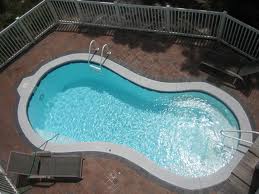
If you are a swimming pool owner you will know that you have to add pool shock to the pool water on a regular basis.
If the pool is being used heavily or there has been a period of heavy rainfall or your free chlorine levels fall below recommended levels, you may even have to shock the pool more often than once a week.
Pool shocks work by super-chlorinating (or super-oxidizing if you are using chlorine free shock) the pool water to remove chloramines. It is needed whether you use chlorine, bromine or ozone as your primary sanitizer.
What Products Do You Use To Shock A Pool?
The most commonly used chlorine based swimming pool shock treatment contains calcium hypochlorite. Different products will have different available chlorine percentages so if you are researching prices make sure you are comparing like with like.
Other popular chlorine shocks include lithium hypochlorite, sodium hypochlorite and dichor. Non chlorine shock or chlorine free shock contains potassium monopersulfate (MPS) as the active ingredient. Like chlorine, MPS is a strong oxidizing agent.
Some pool owners only use liquid shock to avoid the risk of damaging pool surfaces, especially when they have a custom painted swimming pool. It is generally more expensive and has a shorter shelf life than granular shock but is easier to apply.
Granular shock generally requires pre-mixing in a bucket before use. If you have a vinyl pool it is important to ensure that the product is completely dissolved so that un-dissolved particles do not fall to the pool floor and cause bleaching or other damage.
Before adding the shock treatment ensure that the pool is empty and you have removed any obvious debris and leaf litter that may be floating on the pool water of trapped in the skimmers. Only allow people back into the pool once you are confident that the pool chemistry is stable and chlorine levels are within safe levels.

